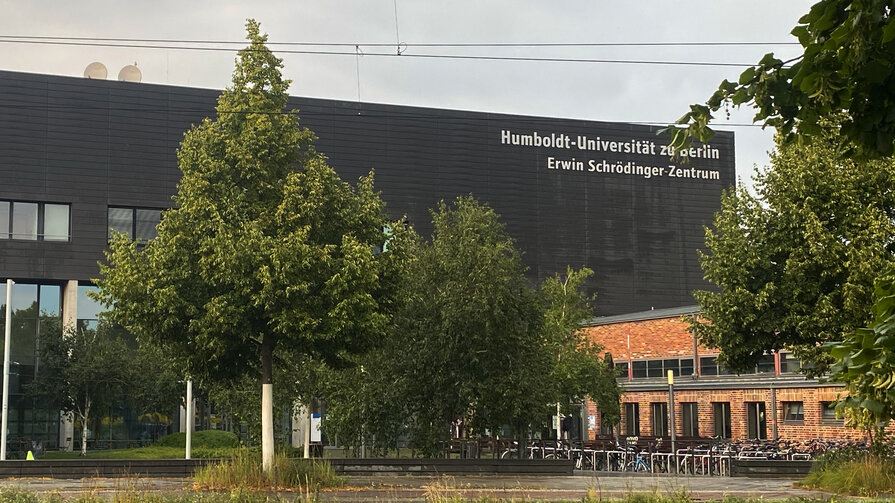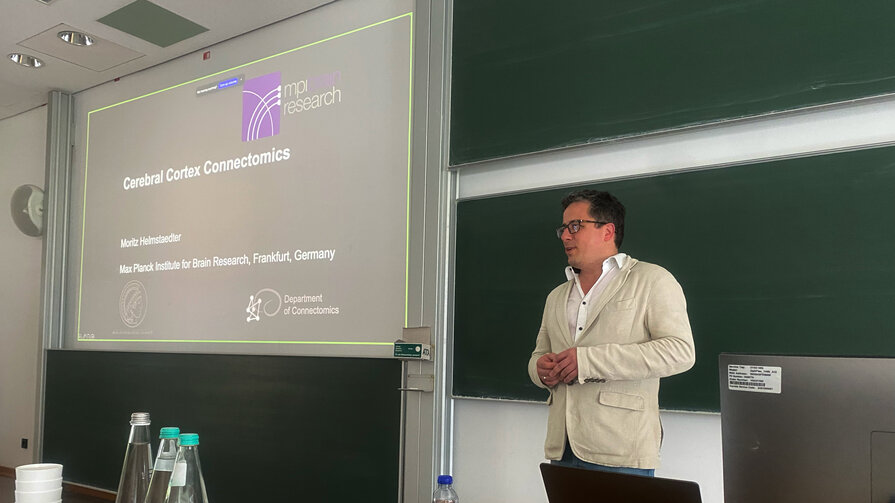Hosted by Sebastian Markett (HU)
Prof. Moritz Helmstaedter
MPI for Brain Research - Department of Connectomics
Moritz Helmstaedter is a Director and Scientific Member at the Max Planck Institute for Brain Research in Frankfurt, Germany and Professor of Neuronal Networks at Radboud Universiteit in Nijmegen, Netherlands.
The Department of Connectomics aims to decipher how the cerebral cortex stores sensory experience and uses it to detect objects in the current environment. To this end, they develop and apply methods for measuring communication maps of neuronal circuits, connectomes. They strive to push the frontiers of connectomics to make the mapping of neuronal circuits a high-throughput technique.
Their main interests are:
- Measuring the similarity between neuronal networks in the cortex of different individuals and different species in search for the algorithms of sensory perception.
- Searching for engrams of sensory experience in the cerebral cortex.
- Understanding the alterations in neuronal network structure in psychiatric disease.
In his talk 'Cerebral Cortex Connectomics' Moritz Helmstaedter spoke about the mapping of neuronal connectivity, which is one of the main challenges in neuroscience. Only with the knowledge of wiring diagrams is it possible to understand the computational capacities of neuronal networks, both in the sensory periphery, and especially in the mammalian cerebral cortex. The methods of the Department of Connectomics for dense circuit mapping are based on 3-dimensional electron microscopy (EM) imaging of tissue, which allows imaging nerve tissue at nanometer-scale resolution across substantial volumes, extending to more than one millimeter on the side, followed by AI-based image analysis to obtain dense connectivity maps, or connectomes. With these they have mapped local circuitry in mouse and human cortex, determining learning-related synaptic traces, inhibitory axonal development, and discovering an expanded interneuron-to-interneuron network in the human cortex. Most recently they completed the connectomic reconstruction of a cortical column. They are currently screening cortical connectomes across age, disease states and experience to obtain a deeper understanding of their relevance for individual behavioral performance and brain pathology.




On July 10, the time had finally come. The long-awaited visit from Moritz Helmstaedter. Born in Berlin, he arrived in his old hometown around 9 a.m. and found his way to the modern campus of the Humboldt-Universität zu Berlin in Adlershof. This time we gathered at the Erwin Schrödinger Center. The modern building houses a science library as well as lecture halls and numerous seminar and conference rooms.
During his fascinating lecture on 'Cerebral Cortex Connectomics', the audience on site and online were spellbound. Unsurprisingly, our guest was flooded with questions afterwards. After the extensive discussion round, it was Marina Mikhaylova who took the opportunity to book Moritz Helmstaedter for an exchange with her group. As Marina's group is based in Mitte, she decided to bring her entire team to the south-east of the city. How cool is that?
Even the moody weather couldn't put a damper on the lively exchange. The mugginess inside drove our scientists out into the open, where their discussion was suddenly interrupted by a heavy downpour, which drove them back into the Schrödinger Center.
It stopped pouring just in time for lunchtime and so everyone was able to reach the Italian restaurant Due Amici reasonably dry. Here, Sebastian Markett and his team had the opportunity to talk to Moritz Helmstaedter in a relaxed atmosphere and enjoy a delicious meal. Afterwards, our guest visited Sebastian Markett's work group, which is located not far from the restaurant. Here, Moritz Helmstaedter could take a look at the facility and was peppered with further questions.
We would like to thank Moritz Helmstaedter for his time and willingness to share his broad knowledge and exciting work with us, as it has definitely generated numerous ideas and questions for future research. We hope that he could also benefit from the exchange with our scientists.
